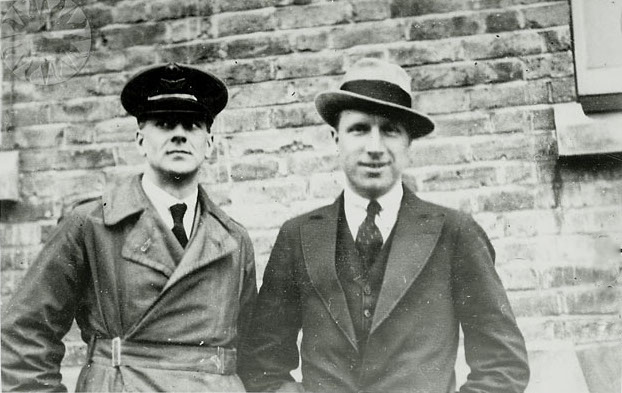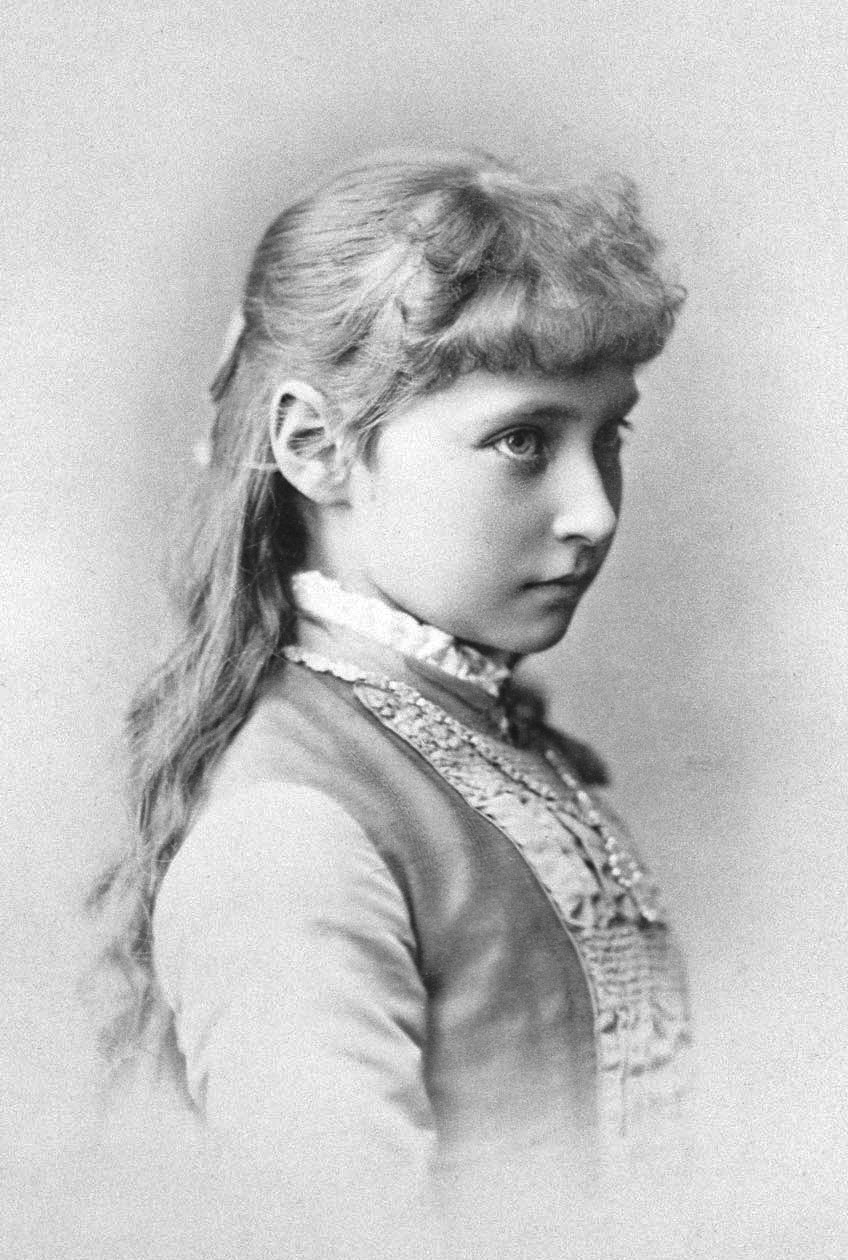|
Diethylbarbituric Acid
Barbital (or barbitone), sold under the brand names Veronal for the pure acid and Medinal for the sodium salt, was the first commercially available barbiturate. It was used as a sleeping aid (hypnotic) from 1903 until the mid-1950s. The chemical names for barbital are diethylmalonyl urea or diethylbarbituric acid; hence, the sodium salt is known also as sodium diethylbarbiturate. Synthesis Barbital, then called "Veronal", was first synthesized in 1902 by German chemists Emil Fischer and Joseph von Mering, who published their discovery in 1903. Barbital was prepared by condensing diethylmalonic ester with urea in the presence of sodium ethoxide, or by adding at least two molar equivalents of ethyl iodide to the silver salt of malonylurea (barbituric acid) or possibly to a basic solution of the acid. The result was an odorless, slightly bitter, white crystalline powder. Its introduction followed the investigations of Fischer and von Mering on the pharmacological properties of ce ... [...More Info...] [...Related Items...] OR: [Wikipedia] [Google] [Baidu] |
Barbiturate
Barbiturates are a class of depressant, depressant drugs that are chemically derived from barbituric acid. They are effective when used medication, medically as anxiolytics, hypnotics, and anticonvulsants, but have physical and psychological addiction potential as well as overdose potential among other possible adverse effects. They have been recreational drug use, used recreationally for their anti-anxiety and sedative effects, and are thus prohibition of drugs, controlled in most countries due to the risks associated with such use. Barbiturates have largely been replaced by benzodiazepines and nonbenzodiazepines ("Z-drugs") in routine medical practice, particularly in the treatment of anxiety disorders and insomnia, because of the significantly lower risk of overdose, and the lack of an antidote for barbiturate overdose. Despite this, barbiturates are still in use for various purposes: in general anesthesia, epilepsy, treatment of acute migraines or cluster headaches, acute t ... [...More Info...] [...Related Items...] OR: [Wikipedia] [Google] [Baidu] |
Diethyl Malonate
Diethyl malonate, also known as DEM, is the diethyl ester of malonic acid. It occurs naturally in grapes and strawberries as a colourless liquid with an apple-like odour, and is used in perfumes. It is also used to synthesize other compounds such as barbiturates, artificial flavourings, vitamin B1, and vitamin B6. Structure and properties Malonic acid is a rather simple dicarboxylic acid, with two carboxyl groups close together. In forming diethyl malonate from malonic acid, the hydroxyl group (−OH) on both of the carboxyl groups is replaced by an ethoxy group (−OEt; −OCH2CH3). The methylene group (−CH2−) in the middle of the malonic part of the diethyl malonate molecule is neighboured by two carbonyl groups (−C(=O)−). The hydrogen atoms on the carbon adjacent to the carbonyl group in a molecule are significantly more acidic than hydrogen atoms on a carbon adjacent to alkyl groups (up to 30 orders of magnitude). (This is known as the α position wi ... [...More Info...] [...Related Items...] OR: [Wikipedia] [Google] [Baidu] |
Transatlantic Flight Of Alcock And Brown
John Alcock and Arthur Brown were British aviators who, in 1919, made the first non-stop transatlantic flight. They flew a modified First World War Vickers Vimy bomber from St. John's, Newfoundland, to Clifden, County Galway, Ireland. The Secretary of State for Air, Winston Churchill, presented them with the ''Daily Mail'' prize of £10,000 () for the first crossing of the Atlantic Ocean by aeroplane in "less than 72 consecutive hours". The flight carried nearly 200 letters, the first transatlantic airmail. The two aviators were knighted by King George V at Windsor Castle a week later. Background John Alcock was born in 1892 in Basford House on Seymour Grove, Firswood, Manchester, England. Known to his family and friends as "Jack", he first became interested in flying at the age of seventeen and gained his pilot's licence in November 1912. Alcock was a regular competitor in aircraft competitions at Hendon in 1913–14. He became a military pilot during the First World War ... [...More Info...] [...Related Items...] OR: [Wikipedia] [Google] [Baidu] |
Arthur Whitten Brown
Lieutenant-Colonel Sir Arthur Whitten Brown, (23 July 1886 – 4 October 1948) was a British military officer and aviator who flew as navigator of the first successful non-stop transatlantic flight with pilot John Alcock in June 1919. Biography Arthur Whitten Brown was born in Glasgow to American parents; his father had been sent to Scotland to evaluate the feasibility of siting a Westinghouse factory on Clydeside. His father, Arthur George, was an electrical engineer, After his birth, the family moved to Chorlton, and lived at 'Ellerslie', 6 Oswald Rd. The factory was eventually sited in Trafford Park in Stretford, Manchester, and the family subsequently relocated there. Both of the Atlantic pilots attended the Central High School for Boys, mostly known as Manchester Central High School. Alcock left at 16. Brown began his career in engineering before the outbreak of World War I and undertook an apprenticeship with British Westinghouse in Manchester. In 1914, he enliste ... [...More Info...] [...Related Items...] OR: [Wikipedia] [Google] [Baidu] |
Alexandra Feodorovna (Alix Of Hesse)
Alexandra Feodorovna (, born Princess Alix of Hesse and by Rhine; 6 June 1872 – 17 July 1918) was the last Empress of Russia as the consort of Tsar Nicholas II from their marriage on until his forced abdication on . A granddaughter of Queen Victoria, Alexandra was one of the most famous royal carriers of hemophilia and passed the condition to her son, Alexei Nikolaevich, Tsarevich of Russia. Alexandra was deeply involved in the personal and political life of her husband, Tsar Nicholas II. Her reputation suffered due to her influence over Nicholas, particularly in her insistence on maintaining autocratic rule in the face of growing revolutionary pressures in Russia. Her relationship with the Russian mystic Grigori Rasputin became a subject of controversy. Rasputin's alleged ability to alleviate Alexei's suffering from hemophilia increased Alexandra's reliance on him, damaging the public perception of the Romanovs and fueling rumors about Rasputin's power within the royal fa ... [...More Info...] [...Related Items...] OR: [Wikipedia] [Google] [Baidu] |
Bromide
A bromide ion is the negatively charged form (Br−) of the element bromine, a member of the halogens group on the periodic table. Most bromides are colorless. Bromides have many practical roles, being found in anticonvulsants, flame-retardant materials, and cell stains. Although uncommon, chronic toxicity from bromide can result in bromism, a syndrome with multiple neurological symptoms. Bromide toxicity can also cause a type of skin eruption, see potassium bromide. The bromide ion has an ionic radius of 196 pm. Natural occurrence Bromide is present in typical seawater (35 PSU) with a concentration of around 65 mg/L, which is about 0.2% of all dissolved salts. Seafood and deep sea plants generally have higher levels than land-derived foods. Bromargyrite—natural, crystalline silver bromide—is the most common bromide mineral known but is still very rare. In addition to silver, bromine is also in minerals combined with mercury and copper. Formation ... [...More Info...] [...Related Items...] OR: [Wikipedia] [Google] [Baidu] |
Hypnotic
A hypnotic (from Ancient Greek, Greek ''Hypnos'', sleep), also known as a somnifacient or soporific, and commonly known as sleeping pills, are a class of psychoactive drugs whose primary function is to sleep induction, induce sleep and to treat insomnia (sleeplessness). This group of drugs is related to sedatives''. ''Whereas the term sedative describes drugs that serve to calm or Anxiolytic, relieve anxiety, the term hypnotic generally describes drugs whose main purpose is to initiate, sustain, or lengthen sleep. Because these two functions frequently overlap, and because drugs in this class generally produce dose-dependent effects (ranging from anxiolysis to loss of consciousness), they are often referred to collectively as sedative–hypnotic drugs. Hypnotic drugs are regularly prescribed for insomnia and other sleep disorders, with over 95% of insomnia patients being prescribed hypnotics in some countries. Many hypnotic drugs are habit-forming and—due to many factors kno ... [...More Info...] [...Related Items...] OR: [Wikipedia] [Google] [Baidu] |
Gram
The gram (originally gramme; SI unit symbol g) is a Physical unit, unit of mass in the International System of Units (SI) equal to one thousandth of a kilogram. Originally defined in 1795 as "the absolute Mass versus weight, weight of a volume of pure water equal to Cube (algebra), the cube of the hundredth part of a metre [1 Cubic centimetre, cm3], and at Melting point of water, the temperature of Melting point, melting ice", the defining temperature (0 °C) was later changed to the temperature of maximum density of water (approximately 4 °C). Subsequent redefinitions agree with this original definition to within 30 Parts-per notation, parts per million (0.003%), with the maximum density of water remaining very close to 1 g/cm3, as shown by modern measurements. By the late 19th century, there was an effort to make the Base unit (measurement), base unit the kilogram and the gram a derived unit. In 1960, the new International System of Units defined a '' ... [...More Info...] [...Related Items...] OR: [Wikipedia] [Google] [Baidu] |
Grain (measure)
A grain is a unit of measurement of mass, and in the troy weight, avoirdupois, and apothecaries' systems, equal to exactly . It is nominally based upon the mass of a single ideal seed of a cereal. From the Bronze Age into the Renaissance, the average masses of wheat and barley grains were part of the legal definitions of units of mass. Expressions such as "thirty-two grains of wheat, taken from the middle of the ear" appear to have been ritualistic formulas. Another source states that it was defined such that 252.458 units would balance of distilled water at an ambient air-water pressure and temperature of and respectively. Another book states that Captain Henry Kater, of the British Standards Commission, arrived at this value experimentally. The grain was the legal foundation of traditional English weight systems, and is the only unit that is equal throughout the troy, avoirdupois, and apothecaries' systems of mass. The unit was based on the weight of a single grain of barl ... [...More Info...] [...Related Items...] OR: [Wikipedia] [Google] [Baidu] |
Capsule (pharmacy)
In the manufacture of pharmaceuticals, encapsulation refers to a range of dosage forms—techniques used to enclose medicines—in a relatively stable shell known as a capsule, allowing them to, for example, be taken orally or be used as suppositories. The two main types of capsules are: * Hard-shelled capsules, which contain dry, powdered ingredients or miniature pellets made by ''e.g.'' processes of extrusion or spheronization. These are made in two-halves: a smaller-diameter "body" that is filled and then sealed using a larger-diameter "cap". * Soft-shelled capsules, primarily used for oils and for active ingredients that are dissolved or suspended in oil. Both of these classes of capsules are made from aqueous solutions of gelling agents, such as animal protein (mainly gelatin) or plant polysaccharides or their derivatives (such as carrageenans and modified forms of starch and cellulose). Other ingredients can be added to the gelling agent solution including plasticizers ... [...More Info...] [...Related Items...] OR: [Wikipedia] [Google] [Baidu] |
Insomnia
Insomnia, also known as sleeplessness, is a sleep disorder where people have difficulty sleeping. They may have difficulty falling asleep, or staying asleep for as long as desired. Insomnia is typically followed by daytime sleepiness, low energy, irritability, and a depression (mood), depressed mood. It may result in an increased risk of accidents of all kinds as well as problems focusing and learning. Insomnia can be short term, lasting for days or weeks, or long term, lasting more than a month. The concept of the word ''insomnia'' has two distinct possibilities: insomnia disorder (ID) or insomnia symptoms, and many abstracts of randomized controlled trials and systematic reviews often underreport on which of these two possibilities the word refers to. Insomnia can occur independently or as a result of another problem. Conditions that can result in insomnia include psychological stress, chronic pain, heart failure, hyperthyroidism, heartburn, restless leg syndrome, menopause ... [...More Info...] [...Related Items...] OR: [Wikipedia] [Google] [Baidu] |
Schering AG
Schering AG was a research-centered German multinational pharmaceutical company headquartered in Wedding, Berlin, which operated as an independent company from 1851 to 2006. In 2006, it was bought by Bayer AG and merged to form the Bayer subsidiary Bayer Schering Pharma AG, which was renamed Bayer HealthCare Pharmaceuticals in 2011. Schering was listed on the Frankfurt Stock Exchange and had 26,000 employees as of 2004. The American pharmaceutical company Schering-Plough, formerly the Schering Corporation, was originally the US subsidiary of Schering AG, and merged with Merck & Co. in 2009. History In 1851, Ernst Christian Friedrich Schering opened the ''Grüne Apotheke'' (Green Pharmacy) in Berlin's ''Chausseestraße'', and in 1871, converted into the name ''Chemische Fabrik auf Actien'' (formerly E. Schering). This date is the company's date of incorporation. The company grew strongly in the following years. In 1913, the company employed 935 workers, 112 master craft ... [...More Info...] [...Related Items...] OR: [Wikipedia] [Google] [Baidu] |






